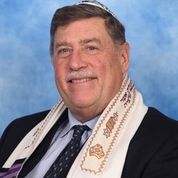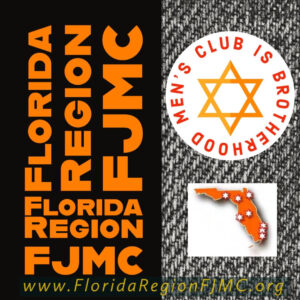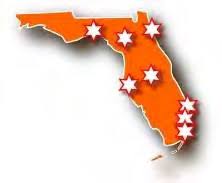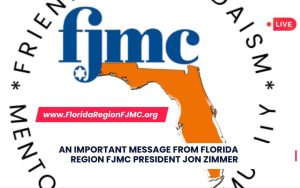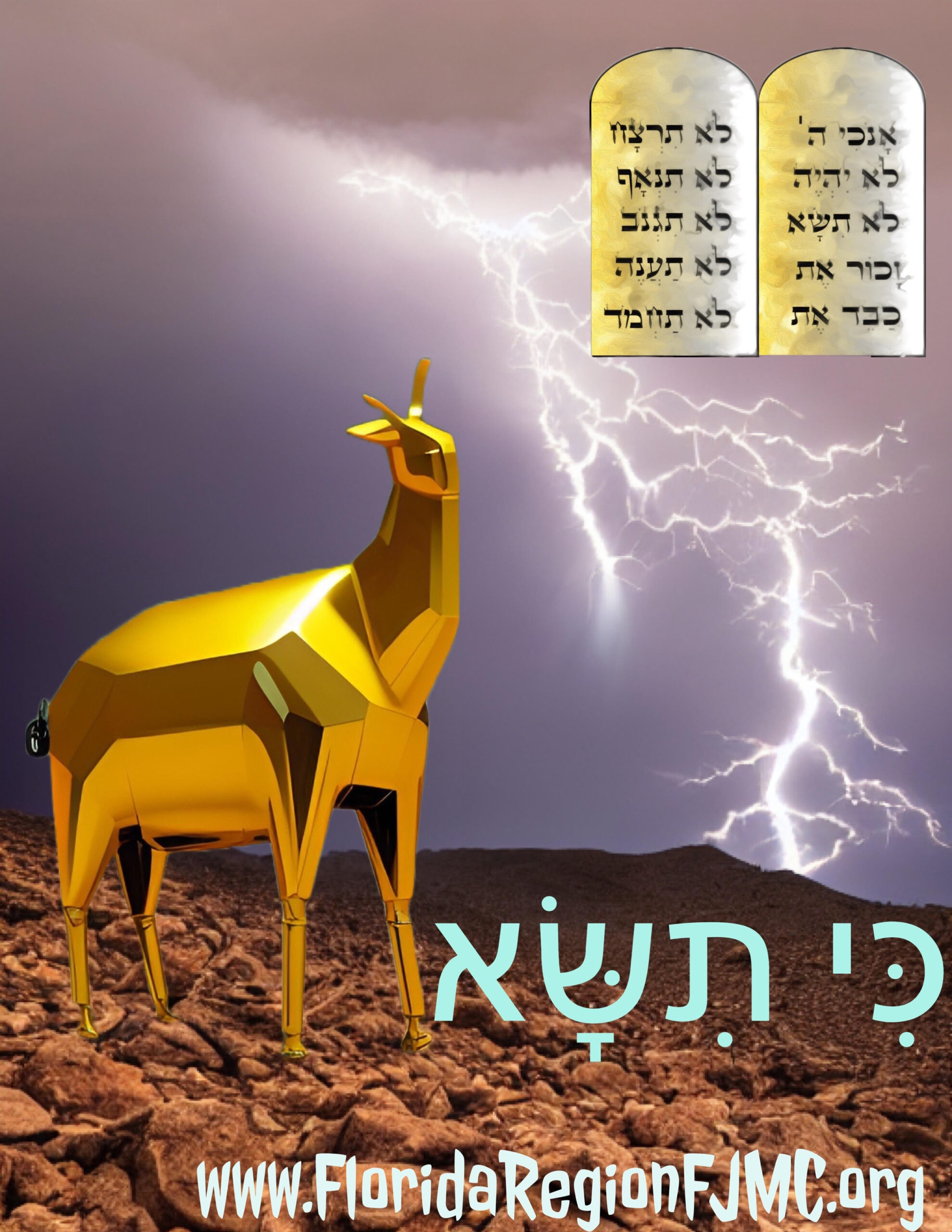
When you Choose Shabbat, you choose to learn that every Shabbat is different and special. This week I learned that Parashat Ki Thissa (כִּי תִשָּׂא), aka Ki Tisa or Ki Tissa, is the 21st weekly Torah portion in the annual cycle of Torah readings.
According to Wikipedia, Ki Thissa (כִּי תִשָּׂא) contains 7,424 Hebrew letters, 2,002 words, 139 verses and makes up 245 lines of a Torah scroll, making it the longest of the weekly Torah portions in the Book of Exodus (Exodus 30:11 through 34:35). Ki Thissa depicts the incident of the “Golden Calf”, famously depicted in the Cecil B. DeMille 1956 classic film, “The Ten Commandments”.
Rabbi Michael D Klein of Temple Torat Emet offers his insights on this week’s Torah reading, Ki Thissa:
“Within this week’s Torah reading and special Maftir are several complex concepts. The Sedra begins with the concept of taking a census by counting half shekalim which was the same amount for rich and poor alike. Then we continue with the commandments for the Kohanim about washing their hands before offering sacrifices (the reason why we wash before saying Motzi) and about preparing spices to be offered as well as anointing oil. We are then introduced to Bezalel ben Uri ben Hur and Oholiab ben Achisamach who were appointed to supervise the work of designing and crafting the work of the holy articles. The work is to take place with assistance from all who are skilled but is not to occur on Shabbat!
The Sedra then continues back to the narrative of Moses descent from Mount Sinai and how, due to a miscalculation in time of return, the people panic and descend into idolatry by fashioning and worshipping the golden calf. As Moses descends the mountain he hears what sounds like the voice of war and then as he realizes the stark truth he throws down the Tablets of Stone and breaks them on the side of the mountain. The Sages ask the question, “Why did Moses have to break the Tablets?” Mishneh Sanhedrin relates that Moshe’s response was emphatic and portentous of our contemporary obligations. It was better to shatter the Tablets than to hand them over to a people who would be unappreciative and would distort them. No Torah is better than a Torah subject to the whims of humans.
The rest of the Sedra then describes how Moses seeks atonement for the sins of Klal Yisroel- the section that we read on all fast days . The special Torah reading of Parah from Numbers then relates how atonement is also made for those made unclean by contact with a body are purified through the ashes of a red heifer. Thus, we learn that in order to be worthy to receive the Holy Torah we must be clean in mind, body, and spirit!
Questions to ponder:
- What was the half shekel which was collected for the census used for?
- Why is the menorah that was used referred to as the Pure Menorah?
- What was the greatest miracle about the writing on the Tablets?
- How does G-d assure Moses that they have been forgiven for the sin of the golden calf?
- Why does the Sedra conclude with the description of the Shalosh Regalim?“
Rabbi Michael D. Klein attended Yeshiva College of South Florida and served as Torah Reader, Hebrew teacher, Chazzan and spiritual leader of various synagogues throughout South Florida. In January 2015 he became Ritual Director, Bnai/Bnot Mitzvah instructor and 7th grade Hebrew instructor for Temple Torat Emet of Boynton Beach. In October 2019 he was accepted into an accelerated track and received his shicha from Yeshiva Adath Wolkowisk and has been the Rabbinic leadership of Temple Torat Emet since August 2020. In September of 2022 he was appointed Rabbinic and Spiritual Advisor of the Florida Region of FJMC.
Choose Shabbat; choose to celebrate, to light candles, sing songs and learn a little Torah.
This moment of Jewish Learning is brought to you by the Florida Region of the Federation of Jewish Men’s Clubs (FJMC). We are part of a confederation of over 200 Jewish Men’s Clubs and Brotherhoods representing over 20,000 members across the United States, Canada, Latin America, and beyond. Learn more about how your Jewish Men’s Club or Brotherhood can affiliate with the FJMC at: https://www.fjmc.org/content/affiliating-fjmc.
The Florida Region of FJMC serves the needs of affiliated Men’s Clubs and Brotherhoods throughout the State of Florida. Get to know more about the FJMC Florida Region and our growing network of Jewish Men’s Clubs and Brotherhoods at www.floridaregionfjmc.org and please visit and LIKE our Florida Region FJMC Facebook Group at www.facebook.com/FloridaRegionFJMC.




